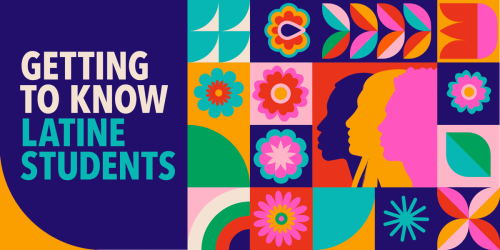What Works in Dual Language Education?

Dual language programs have a long history in American education. Even before the United States was formally established, local schools and communities offered students opportunities to learn and develop proficiency in multiple languages. Today many states have prioritized dual language education: 49 states recognize biliteracy with a seal on high school diplomas, and some even feature dual language access in their statewide priorities.
With evidence that is relevant and specific to students, families, and educators in your community, you can start to build or refine dual language programs to be more effective and equitable.
Despite the enduring popularity of a multilingual approach—and our growing understanding of the social, cognitive, and economic impacts of bilingualism,—we still lack robust evidence on what works in K–12 dual language programs. In December 2022, What Works Clearinghouse—the Institute of Education Sciences-funded reviewer of education research—reported on the evidence of dual language programs. Although they found promising evidence that dual language programs improve literacy outcomes, the data were limited: Only two of 45 eligible studies actually met the very rigorous What Works Clearinghouse standards. That lack of evidence leaves gaps in our knowledge—for example, we don't know much about the different models of dual language education: one-way, two-way, or transitional bilingual programs.
With limited evidence available, how should schools, districts, and education leaders proceed with dual language offerings?
Build on What Practitioners Know
Dual language teachers know from experience that their programs offer powerful benefits. Students who complete programs are bilingual and biliterate and develop cultural competence and sensitivity, which are critical for effective leadership and civic engagement in an ever-more connected world.
Many teachers have also seen the impacts—both short and long term—that dual language programs have on student engagement and academic performance. For years, teachers have hailed the work of Collier and Thomas, two researchers who study the long-term effects of dual language programs. Although their studies do not meet the rigorous What Works Clearinghouse standards, they show promising evidence that different models of dual language have distinct impacts on student outcomes.
With such proximity to students, dual language teachers have a wealth of knowledge on what works—and what doesn’t. Through surveys, interviews, or focus groups, schools and districts can collect data on curricular needs, professional development interests, promising practices, and other information vital for program improvement.
Gather Local Data to Assess Outcomes
While we work on conducting more rigorous studies, schools and districts can also collect local data to better understand their specific dual language programs. For example, for the past seven years, our team has partnered with Beaverton School District in Oregon to assess outcomes of students classified as English learners. This year, using district data, we are reviewing student performance on math and English language arts assessments over time, time to reclassification, and graduation rates (to preview our findings: dual language had a significant and positive impact on most academic outcomes). The district plans to use the results to expand their dual language offerings and inform changes they can make to improve instruction and better serve multilingual learners, with a goal toward improving educational equity.Invest in More Research
The What Works Clearinghouse standards demand that studies use rigorous methods, like random sampling or matching studies, to deliver robust results. These studies can be expensive and time-intensive to conduct. However, we need to invest in this type of research to gain a scientific understanding the effects of dual language instruction.
Investing in more research can also help us understand the impacts of dual language on different populations of students, especially students who are classified as English learners or whose families are newcomers to the United States. Across the two studies that met What Works Clearinghouse standards, 68 percent of participating students were white and only 9 percent were English learners. More rigorous research focused on more diverse groups of students would help us understand how dual language could support educational equity across race, ethnicity, and culture.
Build Your Culture of Evidence
With evidence that is relevant and specific to students, families, and educators in your community, you can start to build or refine dual language programs to be more effective and equitable. The experts on our multilingual learner team can provide specific guidance to help you infuse data into your dual language program—whether you want to provide professional development on evidence-based practices or conduct research within your own district.



